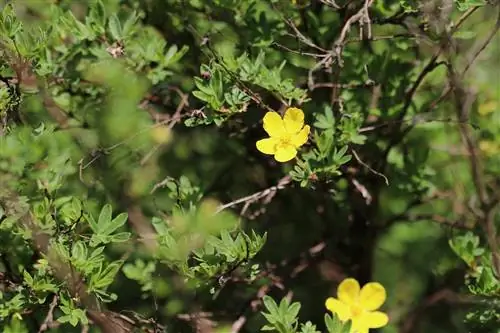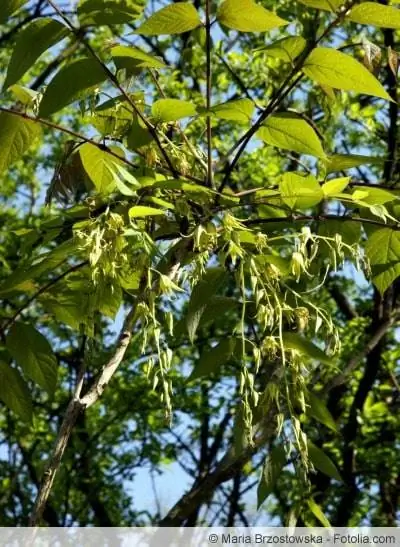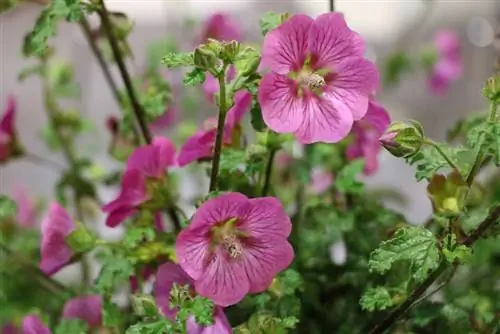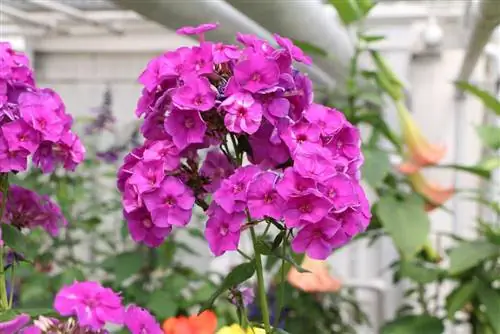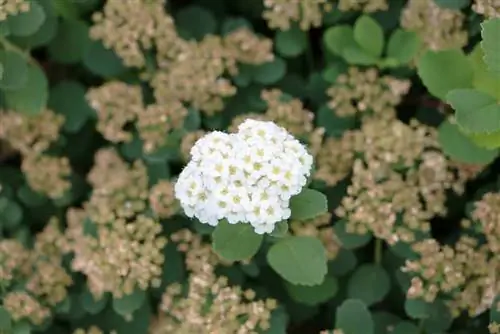- Author admin [email protected].
- Public 2023-12-17 03:39.
- Last modified 2025-06-01 06:48.
The finger bush (Dasiphora fruticosa or Potentilla fruticosa) is part of the large rose family and has become very widespread with more than three hundred species. It is at home in northern Europe as well as in other variations in Siberia or northern China.
The crab is an evergreen shrub that develops a large number of bright yellow flowers. They bloom between May and October. The small leaves, however, are hardly noticeable. Depending on the variety, the garden owner should find out more about the properties of the crab bush. Not only do they display different sizes or colors of flowers, they can also grow quite profusely.
- 'Ivory': flat growing, up to 80 cm high, densely growing, ivory-colored flowers, slightly curly edges
- ‘Rheinsberg’: strong growing, bright yellow flowers, each 3-4 cm tall
Tip:
The ivory variation is recommended for the home garden.
Location for finger bushes
It occurs in many regions of the world, all of which are mostly in the northern hemisphere, but still offer different location conditions. The finger bush copes very well with normal to heavy soil. It can also contain lime and be low in nutrients, as long as it does not contain sand. Sandy soil is too dry for it, it is sensitive to drought and reacts quickly to death. Tip: The finger bush likes a location in full sun.
Depending on which variety you choose, the finger bush can grow in the garden for different purposes. In the “Gold Carpet” variant as a ground cover, it grows very widely, but if this is known, it can also be used specifically. Then the beautiful little flowers will find enough space and at the same time cover an area of the bed, which will definitely look much nicer than before. The “Goldfinger” is a very beautiful plant from the family that can be used as a low-growing hedge.
Cinquefoil - Care
Even if the finger bush is relatively undemanding in terms of water and care, it needs regular watering both in the first few weeks after planting and in summer when there is generally severe drought. In this phase it still has to develop roots and therefore cannot do without moisture. He'll get better at it later. When it comes to nutrients, however, it is more frugal. It also copes well with nutrient-poor soils. The formation of new flowers can be promoted by cutting back the finger bush. Of course, this pruning is best done right at the beginning of spring, then shoots can still form on which the flowers will emerge.
The finger bush is just right in a natural garden or cottage garden and even in a small garden. It fits here not only because of its appearance, but also because of its easy-care properties. If you want to leave your garden almost to your own devices, you can plant a finger bush in the desired growth habit. He is so robust that he can get along on his own, he can even live in a small city garden. A front garden that doesn't have a lot of space is a good place to plant the crab. Here it captivates the eye with its beautiful flowers that last a long time. It can also be planted on a slope. Thanks to its strong root system, it even secures the soil.
Propagate cinquefoil
Although you can easily buy the crab at a nursery or flower center, many gardeners want to grow the plant themselves. If it is not intended to be grown from seed, cuttings can be taken in the summer. Growing from seeds will definitely be more complicated and difficult. In order to get a good cutting, a strong mother plant is necessary. This should be strong and he althy. Cuttings are made this way:
- between November and February “scions” are cut from the plant
- each of these rods is cut into 20 cm long pieces
- under a bud is cut diagonally
- this place is put in wet sand
- keep frost-free until spring
- then plant at intervals in a prepared garden bed
Alternatively, planting can also be done in autumn. Then this should be done in good time so that the cuttings still have enough time to form roots before they stop their activity over the winter.
Pests on the finger bush
Since the crab is a very robust and insensitive plant, hardly any pests or diseases are found on it. Sometimes, depending on the nature of the soil, an iron deficiency can be detected. Completely fertilizing the soil in early spring can prevent a general nutrient deficiency. If a fungus should attack the finger bush, which is also very rare, it could be leaf spot, which can be clearly recognized by the diseased-looking leaves. The plant then looks as if it is already withering and dies. Especially if there are plants nearby that suffer from downy or powdery mildew, this can also spread to the finger bush. Then, however, a rigorous separation from other plants is required; the diseased plants must then best be disposed of.
Things worth knowing about the finger bush in brief
The finger bush is a densely bushy, deciduous shrub with deeply cut small leaves, the so-called fingers. This is where his name comes from:
- The leaves are elliptic to linear and arranged in odd and alternate ways, have a blunt small tip and a rounded base.
- The upper surface of the leaves is green and slightly hairy. The underside of the leaves is light green and medium hairy.
- The leaves have a size of 2 x 2 cm to 4 x 4 cm.
- Cinquefoil blooms in the colors red, orange, white and yellow - from late spring to autumn.
- The flower is cup-shaped and has five petals (so-called petals) per flower, hence the name five-fingered bush.
- Potentilla grow up to 1.5 m high. As fruits, they form small nuts that are dry to hard. They fall off one at a time.
- The plants have brown or gray-brown bark. The branches are reddish brown or brown to purplish brown.
- The finger bush is a shallow-rooted plant. There is a high proportion of so-called fine roots. The main roots are tough and go very deep into the earth.
- The finger bush thrives best in sunny places on well-drained soil, but can also be found in partially shaded places. It prefers sandy or clay soil and comes from Eurasia and is very easy to care for.
- The care of crabgrass is limited to pruning the annual shoots. This is how the plant is kept in shape.
- The old wood after flowering should be cut out to ensure the growth of the finger bush in the following year.
There are around 300 species of Potentilla. Examples include white cinquefoil, goose cinquefoil, Dolomite cinquefoil, marsh bloodeye and bloodroot, which in turn occur in several varieties. Their roots, or the rhizome obtained from them, are also used medicinally.

